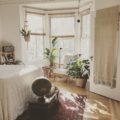Six recipes for success: choosing the perfect color scheme for the home
Designers claim that the time of monochromatic solutions and standard colors in the interior is long gone. Interesting combinations of several tones — the key to an interesting, memorable interior. Our expert, interior designer Olga Glazunova, told about six recipes that will help you find the perfect color scheme for your home or apartment.
Recipe # 1. Create a visual treat
Color circle interior designers called one of the main tools for decoration. It consists of six basic colors, three of which are primary (red, blue and yellow), they can not be obtained by mixing. Secondary colors (green, orange and purple) are combinations of two primary colors, for example, a mixture of blue and yellow gives green. All colors in the color wheel are the most vivid or saturated, but are rarely used by interior designers in their original form. As a rule, professionals use mixed shades when an admixture is added to a bright color. These shades are the easiest to imagine and pick up, if you cause visual associations with fruit, berries or drinks. Everything that for you is delightful and pleasant to taste, visually also will give you pleasure.
Recipe # 2. Use complex cocktails of rich colors
The use of complex colors mixed with other shades in the interior is the first key to success. For example, muting the saturation of orange, by adding green or yellow, we get a more harmonious perception of orange hue or persimmon color. Lowering the brightness of the open red blue or purple, you can choose a more pleasant and noble shades of wine, cranberry and pomegranate. Color palettes of saturated color in the interior tone, make the heart beat faster and improve mood. But remember: in order not to get tired of excessive exposure to bright colors, it is better to use in the entrance areas and corridors. A good option is to add a rich color to neutral colors of the premises as an accent.
Recipe # 3. Apply pastel shades to expand the borders
Beautiful shades are obtained not only by mixing the main colors, but also by adding white to them, which changes the saturation and brightness of the original color. Color with a touch of white becomes lighter and acquires a pastel tone. For example, purple can be lightened to different shades of lavender and lilac, yellow can be a shade of melon or Magnolia flowers. Pastel colors perfectly refresh and expand the room, add airiness and lightness. These shades look feminine, but in combination with monochrome gray or brown pastel colors acquire a fairly neutral appearance and can be used in any room.
Recipe # 4. Add pepper and other spices
Colors with an admixture of black look less bright and are called muted. Consider the example of red, yellow and green colors. Due to the different concentrations in these colors of black or gray, we can pick up gorgeous colors called earthy, such as terracotta, reddish brown, sand and olive green. Less bright than pure red or yellow, these colors resemble shades found in nature in its natural state — different types of soils, minerals and rocks. If you want to create a cozy home environment, the shades of warm wood, oxidized metal, moss-covered rocks will always be good in different rooms.
They look as if sprinkled with pepper and have a grayish or brown Fleur, these colors are classic, do not become obsolete, their use will help to create an interior out of time.
Recipe # 5. Try neutral tones
Like earthy shades, neutral tones reflect the colors of nature, they range from white to black, including also shades of gray with various impurities of brown and beige. For decorative purposes, the most affordable and widely used are shades of cream, gray-brown and gray-yellow. In interior design, they are often referred to as background colors, they are a practical background against which you can use bright pieces of furniture, fabrics or accessories without worrying that these colors can make the room cluttered. This is one of the advantages of neutral tones — they can be combined with any other colors and will take your soul after the emotional selection of bright colors.
Recipe # 6. Strive for color harmony
Even if you want to get a variety of colors, yet your home is best viewed as a whole, not as a series of separate rooms. Let each individual room has its own character, but if it is not combined with other rooms color, the visual chaos is guaranteed. If you want to use different colors in each of the rooms, focus on one main color, using its different tones, and the variety will help you create the use of small bright accent spots, in the form of paintings, textiles and accessories.







